Rules of Civility, and subway photos
I always make a beeline for novels that have anything to do with photography. But in the case of Rules of Civility, Amor Towles’ delightful 2011 debut novel, the inclusion of photography came as a surprise. The book, one of my favorites of last year, takes place in 1930s New York and is narrated by Katey Kontent, an upwardly-mobile daughter of Russian immigrants. Penniless but enterprising, Katey and her friend Eve are in a Greenwich Village jazz bar on the eve of 1938 when they meet Tinker Grey, a handsome, charming young banker. What ensues is a love triangle, an ode to Depression-era New York, and one of the best examples I know of a man writing from a woman’s point of view.
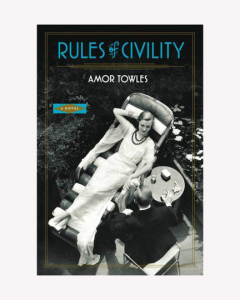 I also really like the way Towles uses photographs by Walker Evans in an alluring, mysterious preface set in 1966. Here, we see a middle-aged Katey attending an opening at MOMA with her husband Val. The show, Many Are Called, is an exhibition of Walker Evans portraits shot on the New York subway in the late 1930s. Walking through it, Katey is taken aback when she spots two pictures of Tinker, her former friend (and perhaps lover – we’re not sure), caught unawares on the subway. In one he’s dressed nattily in a cashmere coat and custom-made shirt; in the second he’s thinner, unshaven and wearing a threadbare jacket. Strangely, he looks happier in the second photo, “vibrant and fearless.”
I also really like the way Towles uses photographs by Walker Evans in an alluring, mysterious preface set in 1966. Here, we see a middle-aged Katey attending an opening at MOMA with her husband Val. The show, Many Are Called, is an exhibition of Walker Evans portraits shot on the New York subway in the late 1930s. Walking through it, Katey is taken aback when she spots two pictures of Tinker, her former friend (and perhaps lover – we’re not sure), caught unawares on the subway. In one he’s dressed nattily in a cashmere coat and custom-made shirt; in the second he’s thinner, unshaven and wearing a threadbare jacket. Strangely, he looks happier in the second photo, “vibrant and fearless.”
So the photographs set up a mystery: what was Tinker’s relationship with Katey? And how did he transform, in the space of a year, from glamorous banker to unshaven derelict? These unanswered questions create a tension that vibrates under the glittering surface of Towles’ beautiful prose as we proceed through the book.
Prior to this I didn’t know much about Walker Evans’ subway photographs. Of course, Evans is best-known for Let Us Now Praise Famous Men, his book with James Agee about Dust Bowl sharecroppers, which still stands as one of the best writer-photographer book collaborations ever. Interestingly, the subway project was conceived by Evans and Agee at exactly the same time as their more famous and celebrated book.
Evans spent three years working intermittently on the subway project, from 1938 to 1941, photographing covertly with a camera hidden in his jacket. (He triggered the shutter by a cable release that ran down his sleeve.) He said he was inspired partly by Third Class Carriage, a painting by the great French artist Honoré Daumier. Protective of his subjects’ privacy (or perhaps just unable to get a contract), Evans didn’t show or publish his subway images for almost thirty years. But he was obviously proud of them. The photographs were “my idea of what a portrait ought to be,” he wrote, “anonymous and documentary and a straightforward picture of mankind.”
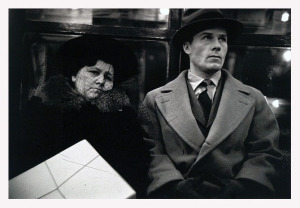 Out of print for many years, Many Are Called was reissued by Yale University Press in 2004, coinciding with an exhibition at the Metropolitan Museum. There’s a good NPR story about the photographs and exhibition here.
Out of print for many years, Many Are Called was reissued by Yale University Press in 2004, coinciding with an exhibition at the Metropolitan Museum. There’s a good NPR story about the photographs and exhibition here.
Looking at the Evans photographs, I was reminded of a similar project by Boston-based photographer B.D. Colen, whom I met some years ago when I was creating content for Photo District News.
Like Evans, Colen devoted considerable time to documenting commuters in his own city, Boston. And although there are differences (Colen’s D-SLR was in plain sight) he captures a similar tone in his black-and-white images. In the novel, Katey describes it as “a certain naked humanity,” where “lost in thought, masked by the anonymity of their commute… many of these subjects had unknowingly allowed their inner selves to be seen.”
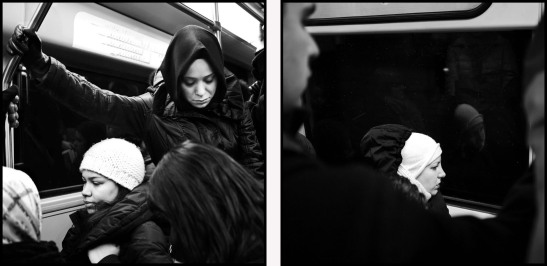 From Alone Together: Riding the Boston T, by B.D. Colen
From Alone Together: Riding the Boston T, by B.D. Colen
When he started his project on the Boston T in 2005, Colen had seen some isolated examples of the Evans subway photos. He’d also seen Bruce Davidson’s raw, jangling body of work about the New York subway at the height of its graffitti-covered 1970s squalor. He didn’t associate his own work with either, he says, because of Evans’ subterfuge and because Davidson’s work “is so harsh and sad… this is New York City at its absolute bottom.”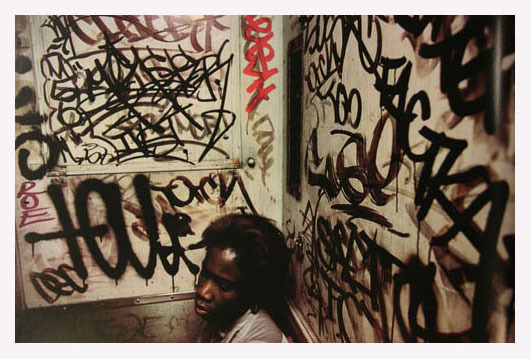 From Subway by Bruce Davidson
From Subway by Bruce Davidson
One thing Colen found interesting was that, even with his camera prominent, people on the T generally didn’t engage with him. “Most people I photographed were so intent on protecting their isolation that they didn’t even emerge from it to acknowledge, or protest, being photographed,” he says. One woman flipped him the bird; a family pulled baseball caps down over their eyes to avoid him. But for the most part he went unchallenged in this netherworld, just another human in transit, doing his thing.
Working methods aside, Colen shares more than just subject matter with Evans. Both are examples of photographers who are also good writers. Colen worked as a newspaper writer for many years, and shared a Pulitzer Prize for reporting in 1984. As for Evans? Judge for yourself with this quote about his subway series:
“The guard is down, the mask is off… Even more than when in lone bedrooms (where there’s a mirror), peoples’ faces are in naked repose down in the subway.”
6 comments on “Rules of Civility, and subway photos”
Leave a Reply
Connecting to %s

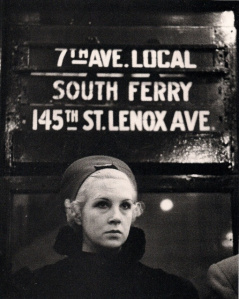

Very nice article. I never had the nerve to photograph people
in NYC subway. Often wondered about doing it.
What an interesting and informative blog, Sarah! I really enjoy the way you link various aspects of your thought processes as they relate to these photographers and you’ve informed me of several books I’d like to read.
Sarah, a wonderful subway photographer is called Christoph Agou he did a book called life below — check it out here http://www.christopheagou.com/
Thanks Anne, I knew there must be other subway projects, it’s such a rich environment. Agou’s images are amazing, thanks for making me aware of them.
Sarah – What a wonderful blog. THank you for sending this to me and please keep me on your list. I am going to check out the book. I also love the images you chose on the Eve Arnold article.
This is a fascinating read.
Other photographers that might interest you are Luc Delahaye whose L’Autre is about the Paris Metro and Thomas Roma who did Higher Ground about New York.